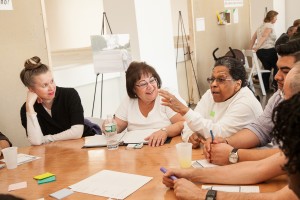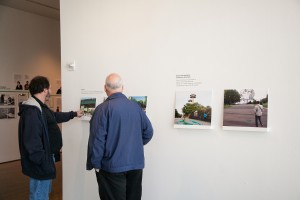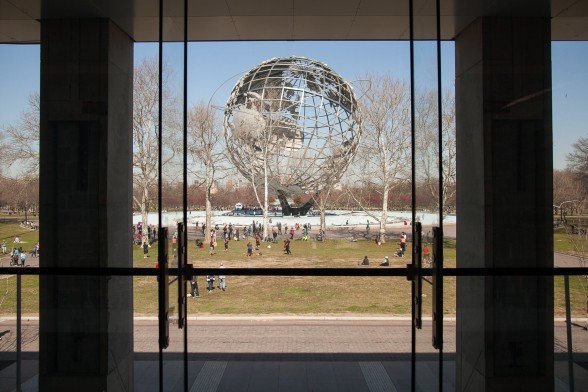A People’s Park Re-envisioned by the People

Who will you meet?
Cities are innovating, companies are pivoting, and start-ups are growing. Like you, every urban practitioner has a remarkable story of insight and challenge from the past year.
Meet these peers and discuss the future of cities in the new Meeting of the Minds Executive Cohort Program. Replace boring virtual summits with facilitated, online, small-group discussions where you can make real connections with extraordinary, like-minded people.
What good is a park or any other kind of public space if you can’t find your way into it? While Flushing Meadows Corona Park, the former World’s Fair ground in Queens is one of the most diverse and heavily used parks in New York City, it’s also hard to find the entrance and easy to lose one’s way within the park. The Design Trust for Public Space joined forces with NYC Parks and Queens Museum to engage the local community in improving access, circulation, and connectivity to this flagship park.

The Community Forum held following the opening of the You Are Here exhibition. Photo by William Michael Fredericks. Courtesy of the Design Trust for Public Space
Twenty-three community advisors, supported and led by the Design Trust fellows team, the NYC Parks administrators, and the Queens Museum, have developed ideas in a four month-long rigorous collaboration, called the community design school, as part of The World’s Park project.
Thanks to the efforts of our Community Organizing Fellow José Serrano-McClain, the project’s community advisors are comprised of highly enthusiastic individuals, ranging in age from 16 to 70, and diverse professional and cultural backgrounds. They are getting equipped in organizing skills, design, architecture and art in public spaces, and want to take part in choosing potential improvements for Flushing Meadows Corona Park.
Some of the participants have been living in Queens for decades. Others called it home more recently, thousands of miles away from where they were born and grew up. Some speak Mandarin or Cantonese; others, Spanish; and some others Korean as their first language.
Design pedagogy was at the center of the ten-session workshop series co-developed by our Design Education Fellow Sarah Lidgus and Participatory Design Fellow Sam Holleran. The Park Administrator and Parks staff also planned the curriculum, participated in every class and workshop, and offered practical advice on the feasibility of design ideas.

Design concepts by The Worlds Park Community Advisors displayed in the You Are Here exhibition. Photo by William Michael Fredericks. Courtesy of the Design Trust for Public Space
From the get-go, Sarah broke down ‘design’ for everyone. “Design is both a noun and a verb. We’re going to be doing both. A lot,” she announced. “Design as a noun might be a plan or drawing produced to show the look and function or workings of a building, garment, or other object before it is built or made. Design as a verb, on the other hand, is a strategic approach for someone to achieve a unique expectation in solving a problem.”
We tackled the design process next. “It starts with research to understand the problems and opportunities. Ideas are born making these concepts visual and tangible. Then other people are asked for feedback. The design gets refined; it evolves and ideas get eliminated to reach the best answer,” Sarah summed up.
The community design school precisely followed this methodology. Midway through the term, we held an initial forum where the community advisors shared their preliminary ideas with the larger public and received critical feedback to their design concepts. The advisors were encouraged to see the park from the perspective of others, examining different ways community members use and navigate the park, as well as how decision-making can align with the ideals of equality and inclusivity of underrepresented groups.

The iconic Unisphere from the 1964–1965 New York World’s Fair in Flushing Meadows Corona Park, as seen from the Queens Museum. Photo by William Michael Fredericks. Courtesy of the Design Trust for Public Space
A final exhibition displayed the collective design concepts of the community advisors at the Queens Museum in May 2015 to help advocate for the design improvements in Flushing Meadows Corona Park. The concepts on view ranged from information kiosks and art installations, to way-finding landmarks, and play areas for children with special needs. The advisors’ creative ideas targeted improving the connectivity between Flushing Meadows Corona Park and the neighboring communities, focusing on the access points and circulation patterns within and around the park.
This summer, members of the group have staged several family events with the Queens Museum’s Education Department to further develop a sensory play space in the park. Building on The World’s Park project with the Design Trust, advisors have also been working with a resident artist, as part of Studio in the Park, the Queens Museum’s new collaboration with the Parks Department, and ArtBuilt’s Esther Robinson, to prototype related concepts to improve connectivity.
The group is also providing their on-the-ground expertise to the NYC Department of Transportation for their initiative to install way-finding kiosks near major park entrances and surrounding transit hubs. We’re hoping that these initiatives point the way toward increased stewardship and decision-making roles for community members in shaping the park spaces that they use everyday.
Discussion
Leave your comment below, or reply to others.
Please note that this comment section is for thoughtful, on-topic discussions. Admin approval is required for all comments. Your comment may be edited if it contains grammatical errors. Low effort, self-promotional, or impolite comments will be deleted.
Read more from MeetingoftheMinds.org
Spotlighting innovations in urban sustainability and connected technology
Middle-Mile Networks: The Middleman of Internet Connectivity
The development of public, open-access middle mile infrastructure can expand internet networks closer to unserved and underserved communities while offering equal opportunity for ISPs to link cost effectively to last mile infrastructure. This strategy would connect more Americans to high-speed internet while also driving down prices by increasing competition among local ISPs.
In addition to potentially helping narrow the digital divide, middle mile infrastructure would also provide backup options for networks if one connection pathway fails, and it would help support regional economic development by connecting businesses.
Wildfire Risk Reduction: Connecting the Dots
One of the most visceral manifestations of the combined problems of urbanization and climate change are the enormous wildfires that engulf areas of the American West. Fire behavior itself is now changing. Over 120 years of well-intentioned fire suppression have created huge reserves of fuel which, when combined with warmer temperatures and drought-dried landscapes, create unstoppable fires that spread with extreme speed, jump fire-breaks, level entire towns, take lives and destroy hundreds of thousands of acres, even in landscapes that are conditioned to employ fire as part of their reproductive cycle.
ARISE-US recently held a very successful symposium, “Wildfire Risk Reduction – Connecting the Dots” for wildfire stakeholders – insurers, US Forest Service, engineers, fire awareness NGOs and others – to discuss the issues and their possible solutions. This article sets out some of the major points to emerge.
Innovating Our Way Out of Crisis
Whether deep freezes in Texas, wildfires in California, hurricanes along the Gulf Coast, or any other calamity, our innovations today will build the reliable, resilient, equitable, and prosperous grid tomorrow. Innovation, in short, combines the dream of what’s possible with the pragmatism of what’s practical. That’s the big-idea, hard-reality approach that helped transform Texas into the world’s energy powerhouse — from oil and gas to zero-emissions wind, sun, and, soon, geothermal.
It’s time to make the production and consumption of energy faster, smarter, cleaner, more resilient, and more efficient. Business leaders, political leaders, the energy sector, and savvy citizens have the power to put investment and practices in place that support a robust energy innovation ecosystem. So, saddle up.






0 Comments